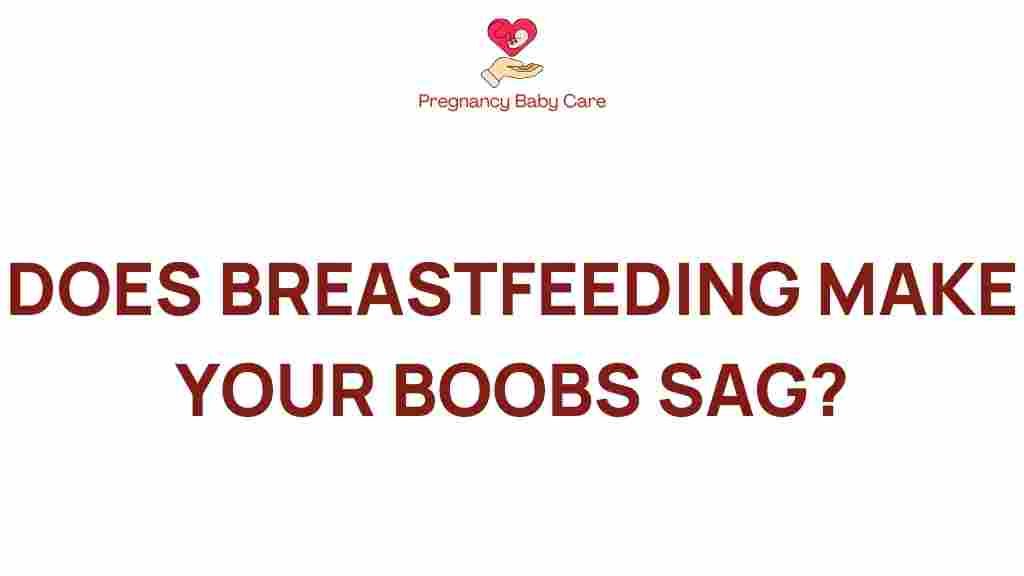The Truth Behind Breastfeeding: Does It Really Cause Sagging Breasts?
Breastfeeding is a natural and essential part of motherhood, providing numerous health benefits for both mother and child. However, many women worry about the potential impact of breastfeeding on their bodies, particularly when it comes to sagging breasts. This article aims to address the health myths surrounding breastfeeding and sagging breasts, helping mothers understand what really happens to their bodies during and after lactation.
Understanding Body Changes During Motherhood
Motherhood brings about significant changes in a woman’s body, and these changes can start during pregnancy, continue through breastfeeding, and often last long after the postpartum phase. Some of the common body changes include:
- Weight gain and loss
- Hormonal fluctuations
- Changes in breast size and shape
- Skin elasticity changes
These factors can influence how a woman’s body looks and feels after childbirth, leading to concerns about self-image and the effects of breastfeeding on physical appearance.
The Myths About Breastfeeding and Sagging Breasts
One of the most prevalent health myths is that breastfeeding causes sagging breasts. While it’s a common belief, research and expert opinions suggest that this is not entirely accurate. Here are some points to consider:
1. The Role of Pregnancy
Pregnancy itself plays a significant role in breast changes. Hormonal shifts during pregnancy cause breasts to enlarge as they prepare for milk production. This enlargement can stretch the skin and tissues, potentially leading to sagging regardless of whether a mother chooses to breastfeed or not.
2. Genetics and Age
Genetics and age are crucial factors in determining breast shape and elasticity. Women with a family history of sagging breasts may experience similar changes, independent of breastfeeding. Moreover, as women age, the skin loses elasticity naturally, which can contribute to sagging.
3. Weight Fluctuations
Weight gain during pregnancy and subsequent weight loss postpartum can also impact breast appearance. Rapid changes in weight can stretch the skin and lead to sagging, which is often more pronounced than the effects of breastfeeding alone.
Health Benefits of Breastfeeding
Despite concerns about sagging breasts, the benefits of breastfeeding for both mothers and babies are well-documented:
- Nutrition: Breastfeeding provides the perfect balance of nutrients for infants.
- Immunity: Breast milk contains antibodies that help protect newborns from infections.
- Bonding: Breastfeeding fosters a close bond between mother and child.
- Health Benefits for Mothers: Women who breastfeed may experience lower risks of certain cancers, diabetes, and postpartum depression.
Step-by-Step Process of Breastfeeding
For new mothers, understanding how to breastfeed can alleviate concerns about the process itself. Here’s a simple guide to help you get started:
1. Finding a Comfortable Position
Choose a position that feels comfortable for both you and your baby. Common positions include:
- The cradle hold
- The cross-cradle hold
- The football hold
- Side-lying position
2. Latching On
Ensure your baby latches onto the breast correctly to facilitate effective breastfeeding. A good latch will help prevent discomfort and ensure that the baby is getting enough milk.
3. Duration and Frequency
Feed your baby on demand, which typically means every 1.5 to 3 hours during the early weeks. Look for cues such as rooting, sucking on hands, or fussiness.
4. Recognizing Signs of Adequate Intake
Signs that your baby is feeding well include:
- Regular wet and dirty diapers
- Consistent weight gain
- Adequate time spent nursing (15-20 minutes on each side)
Troubleshooting Common Breastfeeding Issues
While breastfeeding can be a rewarding experience, it can also present some challenges. Here are some common issues and tips to address them:
1. Sore Nipples
Ensure your baby is latching on properly to minimize soreness. If pain persists, consult a lactation consultant for guidance.
2. Low Milk Supply
If you are concerned about your milk supply, try the following:
- Nurse frequently and on demand.
- Stay hydrated and maintain a balanced diet.
- Consider pumping to stimulate production.
3. Engorgement
If your breasts become overly full and uncomfortable, gently express some milk to relieve pressure. Warm compresses before feeding can help with letdown.
4. Emotional Challenges
Postpartum emotions can fluctuate. Seek support from friends, family, or a support group to discuss feelings related to breastfeeding and body changes.
Maintaining a Positive Self-Image
It’s essential to remember that body changes after childbirth, including those associated with breastfeeding, are normal. Here are tips to help maintain a positive self-image during this transition:
- Practice self-care and prioritize your mental health.
- Engage in physical activities that you enjoy.
- Wear clothing that makes you feel comfortable and confident.
- Connect with other mothers to share experiences and support one another.
Conclusion
In conclusion, the idea that breastfeeding causes sagging breasts is largely a myth. While breastfeeding can contribute to body changes, factors such as pregnancy, genetics, age, and weight fluctuations play more significant roles in breast appearance. The health benefits of breastfeeding for both mothers and babies are undeniable, making it an essential aspect of motherhood.
Embracing the changes that come with motherhood can lead to a healthier self-image and a more positive experience during this special time. Remember, every woman’s body is unique, and it’s crucial to focus on health and well-being rather than societal pressures regarding appearance.
If you want to learn more about maintaining women’s health during and after pregnancy, check out our resources on women’s health. For breastfeeding support and tips, visit La Leche League International.
This article is in the category Feeding and created by PregnancyBabyCare Team

1 thought on “The Truth Behind Breastfeeding: Does It Really Cause Sagging?”